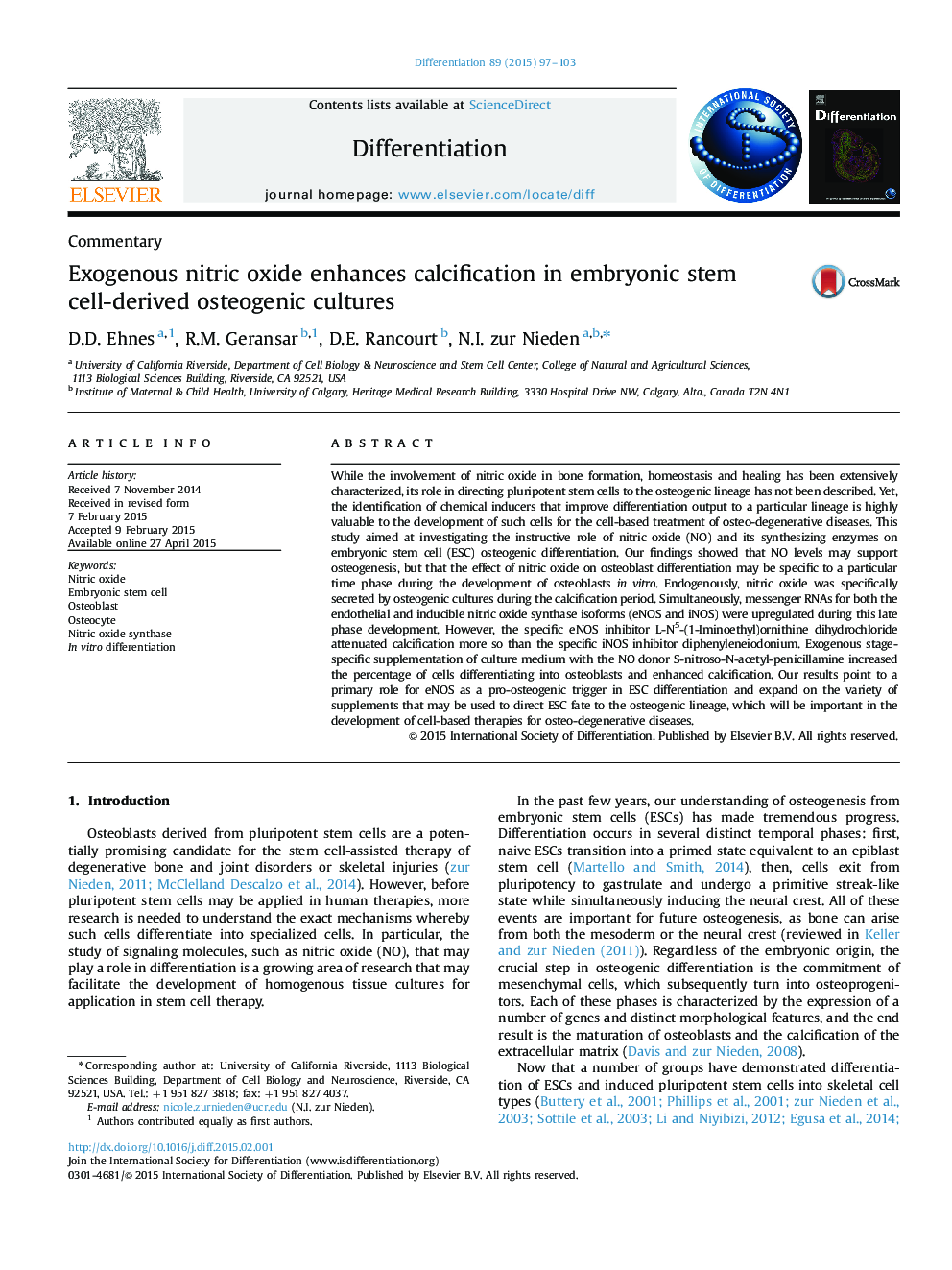| کد مقاله | کد نشریه | سال انتشار | مقاله انگلیسی | نسخه تمام متن |
|---|---|---|---|---|
| 2119313 | 1546792 | 2015 | 7 صفحه PDF | دانلود رایگان |
• NO levels continuously increase during late ESC osteogenesis.
• mRNAs for both the endothelial and inducible nitric oxide synthase were detected.
• Addition of NO donor S-nitroso-N-acetyl-penicillamine increased osteogenic yield.
While the involvement of nitric oxide in bone formation, homeostasis and healing has been extensively characterized, its role in directing pluripotent stem cells to the osteogenic lineage has not been described. Yet, the identification of chemical inducers that improve differentiation output to a particular lineage is highly valuable to the development of such cells for the cell-based treatment of osteo-degenerative diseases. This study aimed at investigating the instructive role of nitric oxide (NO) and its synthesizing enzymes on embryonic stem cell (ESC) osteogenic differentiation. Our findings showed that NO levels may support osteogenesis, but that the effect of nitric oxide on osteoblast differentiation may be specific to a particular time phase during the development of osteoblasts in vitro. Endogenously, nitric oxide was specifically secreted by osteogenic cultures during the calcification period. Simultaneously, messenger RNAs for both the endothelial and inducible nitric oxide synthase isoforms (eNOS and iNOS) were upregulated during this late phase development. However, the specific eNOS inhibitor L-N5-(1-Iminoethyl)ornithine dihydrochloride attenuated calcification more so than the specific iNOS inhibitor diphenyleneiodonium. Exogenous stage-specific supplementation of culture medium with the NO donor S-nitroso-N-acetyl-penicillamine increased the percentage of cells differentiating into osteoblasts and enhanced calcification. Our results point to a primary role for eNOS as a pro-osteogenic trigger in ESC differentiation and expand on the variety of supplements that may be used to direct ESC fate to the osteogenic lineage, which will be important in the development of cell-based therapies for osteo-degenerative diseases.
Figure optionsDownload high-quality image (200 K)Download as PowerPoint slide
Journal: Differentiation - Volume 89, Issues 3–4, March–April 2015, Pages 97–103
